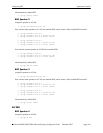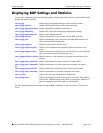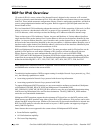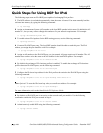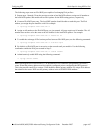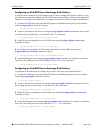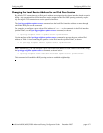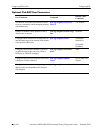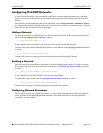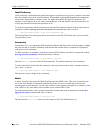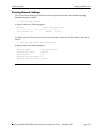
Configuring BGP for IPv6 Configuring BGP
page 4-68 OmniSwitch 6800/6850/9000 Advanced Routing Configuration Guide December 2007
Configuring BGP for IPv6
This section describes the BGP for IPv6 configuration, which includes enabling and disabling IPv6 BGP
unicast, configuring IPv6 BGP peers, and configuring IPv6 BGP networks using Alcatel-Lucent’s
Command Line Interface (CLI) commands.
Enabling/Disabling IPv6 BGP Unicast
By default, BGP peers exchange only IPv4 unicast address prefixes. To exchange other address prefix
types, such as IPv6 prefixes, you need to enable IPv6 unicast advertisements.
To enable IPv6 unicast updates, use the ipv6 bgp unicast command, as shown:
-> ipv6 bgp unicast
In a homogenous IPv6 network, you need to first disable the IPv4 unicast updates, and then enable the
IPv6 unicast updates.
To disable IPv4 unicast updates, use the no form of the ip bgp unicast command, as shown:
-> no ip bgp unicast
Now, you can enable IPv6 unicast updates.
However, in IPv6 environments where the BGP speakers have established peering using their IPv4
addresses, IPv4 unicasting may not be disabled.
Configuring an IPv6 BGP Peer
A router configured to run the BGP routing protocol is called a BGP speaker. Unlike some other routing
protocols, BGP speakers do not automatically discover each other and begin exchanging information.
Instead, each BGP speaker must be explicitly configured with a set of BGP neighbors to exchange routing
information. BGP is connection-oriented and uses TCP to establish a reliable connection. An underlying
connection between two BGP speakers is established before any routing information is exchanged.
BGP supports two types of peers or neighbors, internal and external. Internal sessions run between BGP
speakers in the same autonomous system. External sessions run between BGP peers in different autono-
mous systems.
Every BGP speaker should be assigned to an AS. A BGP speaker can be configured as a peer within the
same or different AS.
You can configure BGP speakers to exchange IPv6 prefixes using either their IPv4 or IPv6 addresses. By
default, BGP speakers exchange only IPv4 unicast address prefixes. To exchange other address prefix
types, such as IPv6 prefixes, BGP speakers must be activated to advertise IPv6 BGP prefixes.
BGP peering can be established using either IPv4 or IPv6 addresses. However, in the absence of IPv4
interface configuration, it is mandatory to explicitly configure the router's router ID and assign a unique
IPv4 address as the router's primary address.
Note. In this document, the BGP terms “peer” and “neighbor” are used interchangeably to mean any BGP
entity known to the local router.




